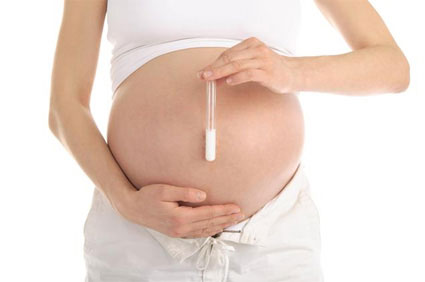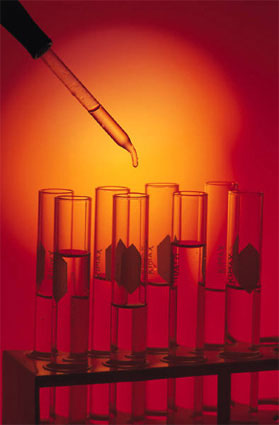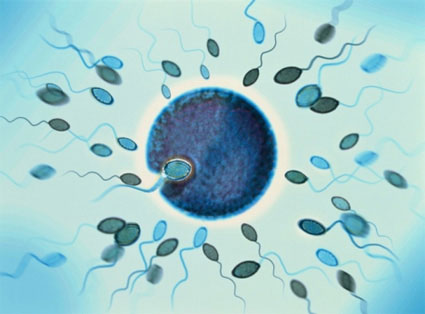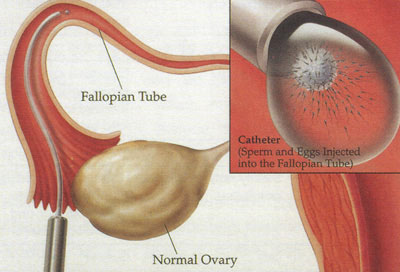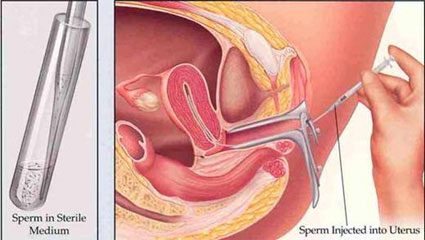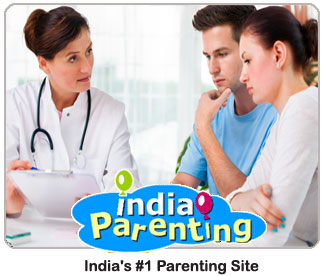Test tube pregnancy or I.V.F. procedure involves fertilizing an egg outside the body and then transferring the embryo back into the uterus. This technique has revoltunised the infertility clinics .This has rekindled the hope of many infertile couples. In this articleWhat is test-tube pregnancy (I.V.F)For whom is I.V.F. advisableHow successful is this treatmentWhat tests are undertaken before performing I.V.F.How is I.V.F. carried outWhat is "test-tube" pregnancy (I.V.F)In 1977, Mr. Steptoe and Dr. Edwards achieved the first successful human pregnancy by the technique of in-vitro fertilisation and embryo transfer. This procedure involves fertilizing an egg outside the body and then transferring the embryo back into the uterus. For whom is I.V.F. advisable Candidates for I.V.F. are usually those women with irreparably damaged tubes. I.V.F. can also be the treatment of last resort in the case of problems like oligospermia, major cervical mucus hostility factors and certain cases of unexplained infertility. A womans age must be considered. Older women feel additional pressure as they feel their biological clocks are ticking and time is running out. The majority of I.V.F clinics put a ceiling on the age for women eligible for this treatment. The general limit is 38 years. This very complex procedure (which has been explained in a very simplistic fashion here), is time-consuming and expensive. While I.V.F. offers hope to many people, its use is only indicated for a very small proportion of the infertile population. How successful is this treatment The success rate of pregnancy associated with this treatment ranges between 15-30%. In the case of a very young patient with a severe tubal problem, it is worth attempting tubal surgery first since even the low success of surgery in these circumstances will probably be greater than the likely success of I.V.F. What tests are undertaken before performing I.V.F. Once the couple has been seen and considered to be possibly suitable for I.V.F., a series of tests commence which will include semen analysis, semen culture and assessment of the menstrual cycle with hormone assays. Depending on the technique that will be used to retrieve the eggs (oocytes) a preliminary laparoscopy or ovarian ultrasound scan may be required, so that the accessibility of the ovaries can be determined. How is I.V.F. carried out A combination of clomiphene and Pergonal is usually given to promote the maturation of several follicles. The idea is that if one has several follicles available for egg retrieval, then if more than one egg is successfully fertilized and transferred back into the uterus, the odds are greater that at least one of them will successfully implant. The progress of the growth of the follicles is closely monitored either by blood and urine tests or by ultrasound measurement of the follicles. Once the follicles are ready for ovulation, H.C.G. of 5,000 units is given. The eggs are retrieved 33-36 hours following the H.C.G. injection. There are two methods which clinics may use for egg retrieval. Laparoscopy. This is carried out under general anaesthetic. The eggs are retrieved from their follicles using a very fine suction needle. T.U.D.O.R. This stands for Trans-vesical, Ultrasound Directed Oocyte Recovery. This is an outpatient procedure performed under a local anesthetic. In this method, a suction probe is guided by ultrasound control through the bladder. This technique also has the advantage of being able to retrieve eggs from an inaccessible ovary even if it is covered by adhesions. The eggs are now incubated for 4-24 hours in a specially prepared culture medium in order to ensure that adequate maturation has occurred. 100,000-1,000,000 specially prepared progressively swimming sperm are then added to the incubated eggs. Fertilisation takes place within the next 24 hours. 2-3 days later the embryo transfer takes place. This is a painless procedure and no anaesthetic is required.
Test tube pregnancy or I.V.F. procedure involves fertilizing an egg outside the body and then transferring the embryo back into the uterus. This technique has revoltunised the infertility clinics .This has rekindled the hope of many infertile couples.What is "test-tube" pregnancy (I.V.F)
In 1977, Mr. Steptoe and Dr. Edwards achieved the first successful human pregnancy by the technique of in-vitro fertilisation and embryo transfer. This procedure involves fertilizing an egg outside the body and then transferring the embryo back into the uterus.
For whom is I.V.F. advisable
Candidates for I.V.F. are usually those women with irreparably damaged tubes. I.V.F. can also be the treatment of last resort in the case of problems like oligospermia, major cervical mucus hostility factors and certain cases of unexplained infertility.
A woman's age must be considered. Older women feel additional pressure as they feel their biological clocks are ticking and time is running out. The majority of I.V.F clinics put a ceiling on the age for women eligible for this treatment. The general limit is 38 years.
This very complex procedure (which has been explained in a very simplistic fashion here), is time-consuming and expensive. While I.V.F. offers hope to many people, its use is only indicated for a very small proportion of the infertile population.
How successful is this treatment
The success rate of pregnancy associated with this treatment ranges between 15-30%. In the case of a very young patient with a severe tubal problem, it is worth attempting tubal surgery first since even the low success of surgery in these circumstances will probably be greater than the likely success of I.V.F.
Once the couple has been seen and considered to be possibly suitable for I.V.F., a series of tests commence which will include semen analysis, semen culture and assessment of the menstrual cycle with hormone assays. Depending on the technique that will be used to retrieve the eggs (oocytes) a preliminary laparoscopy or ovarian ultrasound scan may be required, so that the accessibility of the ovaries can be determined.
How is I.V.F. carried out
A combination of clomiphene and Pergonal is usually given to promote the maturation of several follicles. The idea is that if one has several follicles available for egg retrieval, then if more than one egg is successfully fertilized and transferred back into the uterus, the odds are greater that at least one of them will successfully implant. The progress of the growth of the follicles is closely monitored either by blood and urine tests or by ultrasound measurement of the follicles.
Once the follicles are ready for ovulation, H.C.G. of 5,000 units is given. The eggs are retrieved 33-36 hours following the H.C.G. injection.
There are two methods which clinics may use for egg retrieval.
- Laparoscopy. This is carried out under general anaesthetic. The eggs are retrieved from their follicles using a very fine suction needle.
- T.U.D.O.R. This stands for Trans-vesical, Ultrasound Directed Oocyte Recovery. This is an outpatient procedure performed under a local anesthetic. In this method, a suction probe is guided by ultrasound control through the bladder. This technique also has the advantage of being able to retrieve eggs from an inaccessible ovary even if it is covered by adhesions.
The eggs are now incubated for 4-24 hours in a specially prepared culture medium in order to ensure that adequate maturation has occurred. 100,000-1,000,000 specially prepared progressively swimming sperm are then added to the incubated eggs. Fertilisation takes place within the next 24 hours. 2-3 days later the embryo transfer takes place. This is a painless procedure and no anaesthetic is required.












